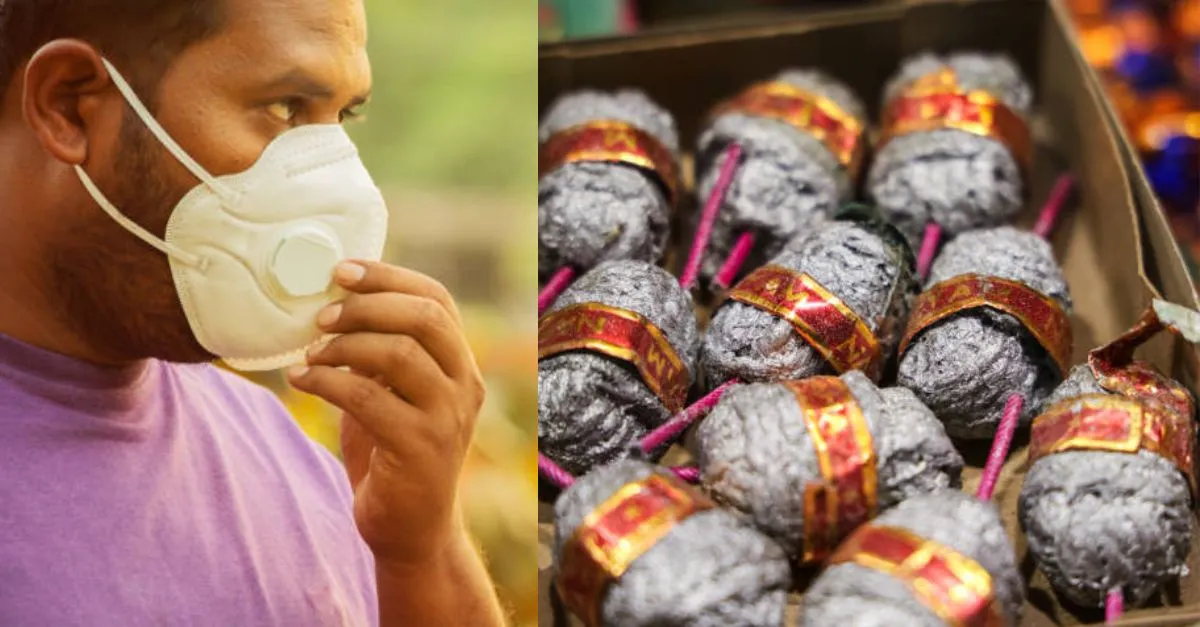- By Yashashvi Tak
- Thu, 16 Oct 2025 04:01 PM (IST)
- Source:JND
As Diwali approaches, concerns about air pollution are rising. Doctors have issued warnings even after the Supreme Court on Wednesday allowed the sale and use of green crackers in Delhi and neighboring cities, lifting its earlier blanket ban on firecrackers aimed at curbing pollution. At the same time, Delhi’s leading chest surgeon said that green crackers still contribute to air pollution, calling the term “green crackers” a misnomer.
ALSO READ: What Are Green Crackers And How Are They Safer For The Environment Than Traditional Fireworks?
"The word 'green' to me is a misnomer which takes away the risk element or rather makes it appear less problematic. A cracker is a cracker. If you burn a cracker, there will be pollution. The best strategy to safeguard yourself is to not burst crackers at all," said Professor-Doctor, Arvind Kumar, Founder, Trustee at Lung Care Foundation and Chest Surgeon at Medanta said to NDTV.
Expertise On Green Crackers Myth
Developed by CSIR-NEERI, green crackers are designed to emit 30-40 percent less particulate matter, limit noise below 120 decibels, and replace harmful metals like barium with safer alternatives. However, experts warn that these reductions may have little impact in highly polluted cities like Delhi, where people with asthma, COPD, or heart conditions remain at risk of chest tightness, cough, and breathing difficulties during Diwali.
Doctors caution that individuals with COPD, asthma, or heart disease are particularly sensitive to these short-term pollution spikes, with hospitals often seeing an increase in emergency visits for breathing difficulties, chest pain, and wheezing during and right after the festive period.
GRAP-1 Implemented
On Tuesday, the Commission for Air Quality Management (CAQM) activated stage one of the Graded Response Action Plan (GRAP-1) as the air quality index surpassed 200. GRAP-1 targets dust control at construction sites, proper waste management, and reduction of emissions.
"Implementation of GRAP means pollution levels have started to rise. There is far more vehicular traffic these days because of the festivals and let us not forget, vehicular emissions also contribute to pollution," said Dr Kumar.
Health Emergency To Rise Due To Pollution
Dr Kumar told NDTV that hospitals often see a spike in chest, heart, and brain ailments, pneumonia, and worsening bronchial asthma cases post-Diwali. He noted that pollution generally rises from October to January, and emissions from firecrackers are just a small addition. Seven to ten days after peak pollution, both private and government hospitals report increased emergency admissions, including higher incidences of heart attacks and strokes.
ALSO READ: Delhi News: Over 120 Kg Banned Firecrackers Seized From Grocery Store In Jyoti Nagar, One Arrested
The immediate effects include red, watery eyes, nasal irritation, sore throat, and cough. Long-term exposure can lead to serious health issues such as cancers in children, premature hypertension, heart and brain attacks, lung diseases like COPD and emphysema, endocrine disorders, and even obesity and diabetes. According to Dr Kumar, air pollution not only harms health but also reduces performance and shortens life expectancy.

